
Bio coming soon.

Richard Howard is a research staff engineer with the Nuclear Experiments and Irradiation Test Group at the Oak Ridge National Laboratory (ORNL). He joined the ORNL in 2011 to design and manage irradiation experiments to be performed at the High Flux Isotope Reactor. His work supports the life extension of nuclear reactors, creates isotopes for industrial and medical uses, and develops Nuclear Thermal Propulsion technology. To date Dr. Howard has authored or co-authored over 50 refereed journal articles, technical reports and conference papers. He received a bachelor’s degree in Mechanical Engineering from Auburn University, a master’s degree in Nuclear Engineering at North Carolina State, and a Ph.D. in Mechanical Engineering at the University of Tennessee.
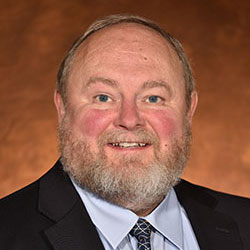
Richard Wood is a professor of Nuclear Engineering at the University of Tennessee, Knoxville. From 1986-2015, he was a senior research engineer at the Oak Ridge National Laboratory (ORNL). He received a Ph.D. in Nuclear Engineering from The University of Tennessee, Knoxville, in 1990. His expertise and research experience includes digital instrumentation and control (I&C) technology, nuclear power plant I&C architectures, safety system regulation, systems engineering, controls, surveillance and diagnostics, and simulation. Dr. Wood conducts research sponsored by U.S. Department of Energy (DOE), U.S. Nuclear Regulatory Commission (NRC), and National Aeronautics and Space Administration (NASA). Recently, Dr. Wood contributed to I&C system designs for the Jupiter Icy Moons Orbiter and is now leading research for NASA and DOE into sensors, control, dynamic modeling, and autonomy for nuclear thermal propulsion.

Kelsa Benensky is a senior nuclear engineer in the Advanced Projects Group of Analytical Mechanics Associates (AMA). Kelsa has a background in the design, testing, and experimental investigation of new and novel design concepts for nuclear thermal propulsion (NTP) through NTP development programs at NASA Marshall Space Flight Center, Oak Ridge National Laboratory, and the Center for Space Nuclear Research. Activities have included re-design and operation verification of MSFC’s compact fuel element environmental test (CFEET) and co-authoring ORNL/LTR-2017/119, “A Preliminary Nuclear Thermal Propulsion Fuel Qualification Plan”, to guide the production, irradiation testing, and verification of NTP fuel elements for the Department of Energy. She has most recently served as the reactor-subsystem lead for an industry nuclear thermal propulsion flight demonstration study commissioned by NASA and led by AMA. Kelsa has received degrees in Mechanical Engineering (BS), Nuclear Engineering (BS) from the Pennsylvania State University, as well as Materials Science and Engineering (MS) and Nuclear Engineering (Ph.D.) from University of Tennessee.
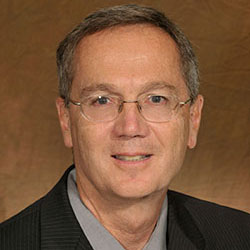
Lawrence Heilbronn is the John D. Tickle Associate Professor and Associate Department Head in the Nuclear Engineering Department at the University of Tennessee, Knoxville. His expertise is in the field of measuring cross sections and yields of interest in the field of radiation protection and medical physics. His current areas of research include measuring secondary particle production from heavy ion interactions relevant to space radiation protection, radioisotope production for medical applications, and nuclear thermal propulsion systems. Dr. Heilbronn has published over 130 articles in peer-reviewed journals. Dr. Heilbronn received a B.S. in physics from the University of Montana, a M.S. in Physics from the University of Illinois, and a Ph.D. in physics from Michigan State University. He worked at Lawrence Berkeley National Laboratory from 1991 to 2008, and joined the faculty at the University of Tennessee in August of 2008.

Padhraic is a member of the Nuclear Experiments and Irradiation Testing group in the Reactor and Nuclear Systems Division of Oak Ridge National Laboratory. Dr. Mulligan received his Ph.D. in Nuclear Engineering from The Ohio State University in 2015, and a B.S. in Applied Physics from Providence College in 2008. In his previous role as a postdoctoral researcher at ORNL, he specialized in thermal/structural modelling of materials in high flux environments and coupled radiation transport/material transmutation calculations for Pu238 production. He was the nuclear engineering lead for development of a high temperature fission chamber for use in advanced gas and molten salt reactors. He also has extensive experience in semiconductor radiation detector fabrication and characterization techniques, with expertise in wide bandgap semiconductors.
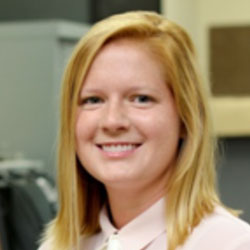
Dianne Bull Ezell joined ORNL as R&D Staff member in July 2011 after completing a 9-month post-master’s internship. She completed a Ph.D. in 2016 focusing on signal processing of EMI rejection for Johnson Noise Thermometry measurements in 2016, from the University of Tennessee. Her research interests are system architecture and integration as well as low-power mixed-signal electronic design for nuclear instrumentation. A few of her on-going projects at ORNL are systems engineer for A Large Ion Collider (ALICE) at CERN, technical lead of the non-destructive evaluation (NDE) program, and system engineer of nuclear instrument design for advanced reactors. Dianne recently started developing irradiation experiments in support of the molten salt campaign. She received a BS in Electrical Engineering (2007) and an MS in Electrical Engineering (2009) from the University of Tennessee with research focused on integrated circuit design for hybrid electric vehicles, medical sensors, and lithography.
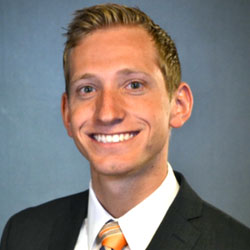
Neal Gaffin is a doctoral student at the University of Tennessee Knoxville studying Nuclear Engineering. He plans on obtaining a Master’s degree in Materials Science and Engineering. He received his undergraduate Bachelor’s degree in Chemical Engineering from Brigham Young University. He is currently researching the effects of neutron irradiation on ceramic fuel materials for use in nuclear thermal propulsion.
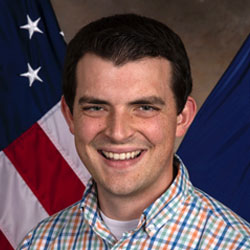
Taylor Duffin is a Ph.D. student at the University of Tennessee. His research focuses on molybdenum cermet fuel materials for nuclear thermal propulsion, specifically their high temperature behavior in a hydrogen environment. He received a Master’s in Nuclear Engineering from Penn State in 2017 and a Bachelor’s in Chemical Engineering from the University of Utah in 2015.